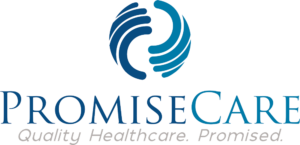
As Labor Day approaches, it’s an ideal moment for reflection, especially for those of us in our 50s and beyond. This time can be used to consider how our work environments can support our health and well-being as we edge closer to retirement or continue in our chosen careers. Many of us have experienced how the boundaries between our professional and personal lives can fade, emphasizing the need for well-defined spaces and wellness-focused workplace policies.
For those navigating the later stages of their careers, workplace adjustments such as ergonomic setups are not just about comfort but essential for long-term health. Similarly, access to quality mental health resources and adaptable working conditions can play a critical role in maintaining our productivity and well-being.
But where do we begin in making these necessary changes? Here’s how you can initiate these important conversations:
- Identify Your Needs: Reflect on what changes would most benefit your health and productivity. Is it a more comfortable office chair, flexible hours, or perhaps better health care options?
- Educate Yourself on Best Practices: Research how other organizations support the health of their older employees. This knowledge can help you propose specific improvements.
- Propose Solutions: When discussing your needs with HR or your supervisor, come prepared with clear, actionable suggestions. For instance, advocate for periodic breaks to stretch or partake in mindfulness exercises to enhance mental health.
- Engage with Colleagues: Chances are, you’re not the only one in your age group at work. Discuss mutual concerns and approach management as a group if possible, which can often have a greater impact.
- Highlight the Benefits: Remind your employers that workers who are healthy and happy are also more productive and likely to have lower healthcare costs and reduced absenteeism.
Implementing these strategies not only helps in maintaining your health but also ensures that you remain an active, engaged, and valued member of your workplace.
Remember, advocating for your well-being is not just beneficial for you but can set a precedent that helps everyone in your workplace, inspiring changes that foster a healthier, more productive environment for all.
Main Points
- Design ergonomic workspaces that cater to the needs of aging bodies, helping to minimize discomfort and sustain productivity. Consider adjustable chairs and desks that support proper posture and ease joint strain.
- Promote mental well-being by encouraging regular breaks to refresh the mind and offering access to counseling resources tailored for those nearing or in retirement, addressing common psychological transitions and challenges.
- Provide flexible work arrangements that support the unique life circumstances of older employees, such as phased retirement options and schedules that accommodate medical appointments or caregiving responsibilities.
- Encourage participation in workplace wellness activities that are suitable for those over 50, such as low-impact yoga classes or walking groups that meet for leisurely, social exercise rather than competitive sports.
- Focus on nutritional needs specific to those over 50 by offering healthy food options that cater to dietary restrictions and changing metabolic needs, and organize workshops that provide practical advice on maintaining a balanced diet as one ages.
These initiatives should empower individuals over 50 to maintain their health and wellness while feeling valued and understood in the workplace. Proper support and resources can significantly enhance their overall quality of life and job satisfaction.
Understanding Work-Life Balance

Understanding work-life balance is essential for maintaining your health and well-being, especially as you enter your 50s and beyond. At this stage in life, many face the challenge of balancing career demands with personal life, possibly gearing towards retirement planning, and managing age-related health concerns. It’s crucial not just to manage your time but to enrich your life both during professional engagement and personal downtime.
Firstly, evaluate how effectively you separate your professional responsibilities from your personal life. In an era where being constantly connected is common, it’s important for those in their later career or transitioning to retirement to set firm boundaries. This could involve turning off work-related notifications after hours or allocating specific times for relaxation and engaging in hobbies. Maintaining your well-being isn’t only vital for your own health but also enriches the quality of life and enables you to continue contributing meaningfully to your community and loved ones.
Reflect on the quality of your downtime. Are you engaging in activities that rejuvenate both your mind and body? Consider incorporating leisure activities that are both enjoyable and suitable for your age, such as walking, gardening, yoga, or other low-impact sports. These activities help lower stress levels, improve sleep, and enhance overall health.
Moreover, heightened stress levels can have more pronounced physical and mental effects as we age. It’s crucial to regularly evaluate your work-life balance to identify and address any stress points. This proactive approach allows you to make informed decisions about managing your time and commitments effectively.
For those navigating healthcare in later life, understanding how to manage chronic conditions and what benefits Medicare and supplements offer can be crucial. Practical advice on these topics can significantly impact your quality of life, ensuring you remain active and informed.
Physical Health Initiatives

As you consider the benefits of physical health initiatives at your workplace, especially tailored for those aged 50 and older, it’s important to examine how ergonomic workspaces and tailored fitness programs can significantly enhance your well-being. Ergonomic designs are crucial as they minimize the risk of strain and increase comfort, which becomes increasingly important as we age. These adjustments can lead to improved productivity and a more enjoyable work environment.
Moreover, integrating fitness programs specifically designed for your age group can invigorate your daily routine and contribute to a vibrant, health-oriented office culture. Activities such as yoga, walking clubs, or light resistance training can keep you active without overstraining, helping to maintain your energy levels and overall health.
It’s also beneficial to consider how these initiatives fit into your broader life goals, such as maintaining mobility, managing age-related health conditions, and enjoying an active retirement. Practical advice for incorporating these elements into your daily life could include setting gentle reminders to take breaks for stretching or walking, choosing appropriate ergonomic tools like standing desks or supportive chairs, and participating in fitness programs that offer age-appropriate activities.
Ergonomic Workspace Benefits
Ergonomic workspaces are vital at every age, but especially for those of us in our 50s and beyond, as they significantly decrease the risk of musculoskeletal disorders, enhancing both health and productivity. By incorporating chairs and desks designed to support good posture, not only are you preventing back pain, but you’re also cultivating a work environment that values health and well-being. This commitment to a healthy workspace can tremendously improve your daily work experience, helping you stay comfortable and focused.
Investing in ergonomic tools like standing desks and wrist supports goes beyond mere comfort; it’s about safeguarding your long-term health. These adaptations ensure you work in a manner that reduces eye strain and physical discomfort, particularly important during extended working hours. The benefits are clear: reduced absenteeism and lower healthcare costs from injuries that are far too common in non-ergonomic settings.
Promoting work-life balance through ergonomic workplace practices reflects a commitment not just to the quality of your work, but also to your personal well-being. Feeling better leads to working better, benefiting the entire team. Remember, taking care of yourself isn’t just necessary—it’s essential. By fostering an ergonomic environment, you’re taking a significant step toward a healthier and more productive professional life.
For those of us planning for retirement or already enjoying it, understanding how to maintain and enhance our health through such practical measures can be incredibly beneficial. Engaging in activities that improve our work and daily living environments can make a substantial difference in our overall quality of life.
Workplace Fitness Programs
Building upon the essentials of ergonomic workspaces, integrating workplace fitness programs can significantly uplift your health and vitality, especially as you navigate the enriching years beyond 50. These initiatives aren’t just about physical wellness; they also create a dynamic and productive environment that resonates well with the maturity and experiences of older employees.
Envision the profound impact on your daily life when your mental and physical health are harmoniously aligned within a workplace that prioritizes your well-being.
Envision engaging scenarios that these programs bring to life:
- Gentle morning yoga sessions in a sunlit conference room, providing a calm and rejuvenating start to your day, suitable for all fitness levels.
- Groups of colleagues sharing stories and support during lunchtime walking groups or low-impact fitness activities.
- Dedicated, quiet spaces for meditation or breathing exercises, offering a peaceful retreat for stress relief between tasks.
- Cafeterias with healthy food options labeled with nutritional information, making it easier to maintain a balanced diet.
- Workshops focused on nutrition and managing common age-related health issues, like arthritis or cardiovascular health, enhancing your understanding and proactive management of your health.
These programs not only contribute to reduced healthcare costs and decreased absenteeism but also bolster employee engagement and morale. Each step toward integrating fitness and wellness into your routine represents a move towards a healthier lifestyle and can significantly reduce turnover rates.
This Labor Day, consider how adopting a balanced approach to physical health can’t only transform your work life but also cultivate a deep sense of community and mutual support among colleagues.
This content should leave you feeling informed and respected, providing you with actionable advice on how to enhance your quality of life as you age. It aims to build trust and establish a connection by addressing your specific needs and values as someone experienced in life’s journey.
Mental Health Support Systems

Implementing mental health support systems in your workplace can greatly benefit those approaching or enjoying their retirement years, reducing absenteeism and enhancing productivity. By prioritizing mental health, you not only boost workplace wellness but also ensure the well-being of employees at every stage of life, including those in their 50s and beyond.
Offering counseling resources and stress management programs is essential. These initiatives provide your team, particularly the older members, with the tools they need to manage work-related pressures effectively. Consider an employee who might be dealing with stress silently; accessible counseling can be transformative, providing relief and strategies to manage their challenges effectively. This proactive approach can lead to a more positive work environment and significantly higher job satisfaction.
Furthermore, studies have consistently shown that when mental health is taken seriously in the workplace, the overall atmosphere improves. People feel valued and supported, fostering a sense of community and enhancing loyalty to the company. You’ll notice that teams with strong mental health support tend to be more collaborative and innovative.
It’s important to note that supporting mental health isn’t just about intervening when issues arise. It’s about creating a culture where discussions about mental health are open and encouraged. This openness is crucial in breaking down the stigma associated with mental health issues, making it easier for employees, especially those in their 50s and older, to seek help early on. They often face unique stresses, including concerns about retirement planning, age-related health changes, and maintaining an active, engaging lifestyle.
Engaging with mental health resources can also provide practical advice on staying active, managing chronic conditions, and navigating healthcare services and benefits, which are particularly pertinent to this age group. By ensuring that these resources are accessible—featuring clear visuals and readable text—employers can significantly enhance the quality of life for their mature employees, making them feel respected and valued within the workplace community.
Work-Life Balance Programs

Work-life balance programs are tailored to support you in balancing the demands of your career with a fulfilling personal life, significantly minimizing the risk of burnout and increasing your satisfaction at work. These initiatives are vital, serving as essential tools for maintaining both your professional success and personal health as you navigate the later stages of your career and consider retirement planning.
Imagine a workplace that prioritizes your well-being, especially as you approach or are in your 50s and beyond:
- Flexible Work Arrangements: Adapt your work schedule to better align with your lifestyle needs, whether it’s to care for grandchildren, attend medical appointments, or enjoy leisure activities. Options like starting your day earlier or working from home can significantly contribute to a balanced life.
- Stress Management Workshops: Tailored sessions provide you with effective strategies to manage workplace stress, which is crucial for maintaining long-term health and preventing age-related illnesses.
- Mental Health Resources: Access to counseling and support tailored to the needs of older adults helps you navigate the challenges that often come with this life stage, including transitioning into retirement.
- Health and Wellness Activities: Engage in activities such as tai chi, walking clubs, or gentle yoga classes offered during lunch breaks or as part of a subsidized gym membership. These are designed to keep you physically active and fit without overstraining, which is essential for longevity.
- Employee Support Networks: Join groups of colleagues who are at similar life stages or facing similar health and life adjustments. These networks provide a community of support, sharing tips on managing chronic health conditions, retirement planning, and more.
Organizations that implement these work-life balance programs see numerous benefits, including enhanced productivity, reduced absenteeism, and better employee morale. Engaging in these programs not only makes you a more effective employee but also supports a healthier, more content lifestyle as you plan for the future.
Take the steps provided by these programs to transform not only your workday but also enrich your life outside the office. With the right resources and support, you can enjoy this dynamic chapter of your life with vigor and purpose.
Creating a Wellness Culture

Creating a Wellness Culture for Individuals Aged 50 and Over
To cultivate a thriving wellness culture in your workplace or community, especially for those aged 50 and older, it’s crucial that leadership takes an active role and sets an exemplary health-positive standard. When senior members and leaders showcase their commitment to well-being, it reinforces the importance of health and can greatly motivate others to follow suit, fostering a supportive environment that respects both personal and professional life balance.
Wellness activities shouldn’t feel burdensome, particularly at this stage in life. Implementing incentives for participation, such as additional health care benefits, flexible scheduling, or acknowledgments in community gatherings, can significantly boost engagement. These rewards show appreciation and recognition, often leading to increased participation and enthusiasm in wellness programs.
It’s important to monitor the effectiveness of wellness initiatives. Keeping track of participation rates and the overall impact on the community’s health and happiness allows for necessary adjustments, ensuring these programs meet the evolving needs of those over 50. Evaluating whether these initiatives lead to a healthier, more vibrant environment is key.
Encourage a range of healthy options tailored to the 50+ demographic. This could include seminars on nutritional needs specific to older adults, gentle fitness classes like tai chi or water aerobics, and social activities that promote mental and social well-being. Competitions such as walking challenges or nutritional recipe exchanges can also add a fun and interactive element to the program, promoting both health and camaraderie.
Creating a wellness culture for those aged 50 and older involves ongoing commitment and understanding of the unique challenges and needs of this age group. By consistently promoting healthy habits and a balanced lifestyle, and by valuing the wealth of experience this demographic brings, you not only enhance the community’s morale but also build a supportive network that cherishes well-being.
This approach ensures that older adults feel respected, engaged, and empowered to maintain their health and vitality, making wellness a rewarding part of their everyday lives.
Role of Technology in Health

The role of technology in your health goes beyond mere convenience; it’s transformative, especially as you navigate the nuances of wellness in later life stages. In today’s dynamic world, achieving a healthy work-life balance is crucial, not just a luxury. For those aged 50 and above, innovative digital tools provide an unprecedented opportunity to manage wellness seamlessly alongside professional and personal commitments.
Health apps and telehealth services are particularly valuable as they accommodate your unique needs without interfering with your daily responsibilities. Picture this: scheduling a virtual consultation with your physician while enjoying a morning cup of tea, or using a health app that gently nudges you to engage in light stretching exercises every few hours. These technologies support not only your physical health but also your mental well-being by alleviating stress and boosting your productivity, which is vital as you approach or enjoy retirement.
Here are several ways technology fosters a healthier living environment tailored to your specific stage in life:
- Personal Health Trackers: Devices like smartwatches that monitor your heart rate, sleep patterns, and daily steps can motivate you to maintain an active lifestyle and ensure proper rest.
- Customized Wellness Programs: These are particularly beneficial as they can be adapted to focus on age-appropriate health goals, fostering a culture of wellness in any setting.
- Telehealth Services: Virtual healthcare saves time and eliminates the hassle of commuting, making medical care more accessible as mobility becomes a growing consideration.
- Interactive Health Apps: These tools offer guided activities suited to your pace, such as meditation, light fitness routines, and nutritional tracking, which are essential for maintaining health in your 50s and beyond.
- Data Analytics: This technology aids in evaluating the effectiveness of wellness programs, ensuring they’re genuinely beneficial and tailored to the needs of older adults.
Engaging with these technological solutions can lead to a more balanced and health-focused lifestyle, helping you feel empowered and cared for in your later years. Such innovations ensure that you remain active, informed, and connected, enhancing your quality of life as you age gracefully.
Building Resilience and Coping

As you navigate the later stages of your career or embrace the joys of retirement, mastering stress management techniques is crucial for maintaining your vitality and well-being. Enhancing your emotional resilience isn’t just about coping; it’s about flourishing under pressure and ensuring your long-term health.
Making self-care a daily priority is essential, especially as you face unique challenges and transitions inherent to this life stage.
For those aged 50 and older, it’s important to tailor your self-care practices to support both physical and mental health. Consider integrating activities like yoga, tai chi, or gentle swimming into your routine, which are excellent for maintaining flexibility, strength, and cardiovascular health without overstraining your body. Also, staying socially active can help manage stress and foster a sense of community and belonging.
Nutrition also plays a key role in your health. Opt for a balanced diet rich in fruits, vegetables, lean proteins, and whole grains to boost energy levels and combat age-related illnesses. Understanding your healthcare options, such as the details of Medicare and supplemental insurance, can greatly reduce stress related to medical services and expenses.
Remember, it’s never too late to adopt new health habits. Consider regular health screenings and consultations with healthcare providers to stay proactive about your health conditions.
Engage with resources and communities that offer insight into managing common age-related health issues, such as arthritis or cardiovascular health, ensuring you’re well-informed to make decisions that positively impact your life.
Incorporate these practices into your daily life to not just meet challenges head-on but to thrive and enjoy this enriching phase of life. By staying informed and proactive, you can maintain a fulfilling and active lifestyle that empowers you to enjoy your 50s and beyond with confidence and health.
Stress Management Techniques
Effective stress management is crucial for maintaining resilience and enhancing your capacity to handle workplace challenges, especially as you approach or enjoy your retirement years. As you adapt to changes in your work environment or transition into retirement, it’s important to develop strategies that not only keep you productive but also protect your mental well-being. Taking proactive steps in stress management can significantly impact how you manage daily pressures, promoting a healthier and more fulfilling life.
Consider incorporating these tailored techniques into your daily routine to foster a resilient and supportive environment, suitable for those aged 50 and older:
- Mindful Moments: Allocate time for short breaks throughout your day to engage in mindfulness or deep breathing exercises. These pauses help reset your mental state and enhance your focus, which is particularly beneficial as we age and seek to maintain cognitive health.
- Open Dialogues: Create an environment where discussions about stressors and challenges are encouraged. This promotes a culture of support and understanding, vital as you navigate changes in your professional and personal life during these years.
- Resilience Workshops: Engage in workshops designed to equip you with practical tools to adapt to changes and effectively overcome obstacles. These could focus on strategies for emotional well-being, managing health changes, or planning for retirement.
- Healthy Relationships: Cultivate strong interpersonal relationships with colleagues or peers. These connections can provide crucial support during stressful times and can be particularly valuable as social circles may change post-retirement.
- Leadership Training: If you’re in a managerial or mentorship role, consider undergoing training that focuses on understanding and implementing effective stress management strategies tailored for older adults. This training can help you support others who are also navigating similar life stages.
Enhancing Emotional Stamina
Enhancing Emotional Stamina in Your 50s and Beyond
As we mature, managing stress and building emotional resilience become crucial for thriving in both personal and professional environments. For individuals aged 50 and older, understanding how to cultivate this resilience is key, particularly in this stage of life which might involve transitioning into retirement or adapting to changes in the workplace due to age.
Maintaining strong personal relationships at work can be a central component of your emotional health. These connections aren’t only sources of emotional support but also valuable networks that help in navigating through challenging periods. It’s beneficial to promote a work environment where all employees, regardless of age, feel appreciated and supported. This not only reduces stress but also enhances the overall morale and productivity of the team.
For those in leadership roles or transitioning out of full-time work, it’s essential to prioritize resilience training and foster open communication. These initiatives help in managing stress more effectively and maintaining robust emotional health, allowing you to perform consistently well despite potential challenges.
Practical Advice for Enhancing Emotional Stamina:
- Engage in Regular Physical Activity: Choose activities you enjoy, such as walking, yoga, or swimming, which aren’t only good for your physical health but also have a positive impact on your mood and stress levels.
- Cultivate Interests Outside of Work: Whether it’s gardening, painting, or volunteering, having hobbies can provide a great source of relaxation and joy.
- Stay Connected: Maintain relationships with family, friends, and colleagues. Regular social interaction is vital for emotional support and can provide a different perspective on issues you might be facing.
- Learn Stress Management Techniques: Techniques such as mindfulness meditation, deep breathing exercises, or tai chi can be extremely beneficial. Consider joining a class or group that focuses on these practices to also meet peers and build a supportive community.
- Seek Professional Guidance: If stress and emotional challenges become overwhelming, talking to a therapist or counselor can be helpful. They can provide strategies and insights tailored to your personal experiences.
Prioritizing Self-Care Daily
Prioritizing self-care daily is essential, especially as we age, helping you manage stress effectively and maintain resilience. Engaging in self-care not only benefits your personal well-being but also enhances your capacity to care for others with increased energy and empathy. This commitment is particularly beneficial for those in their 50s and beyond, as it can lead to greater satisfaction in both personal and professional life, helping you tackle daily demands with a rejuvenated spirit.
Consider integrating these tailored self-care practices into your routine, designed with the unique needs of older adults in mind:
- Morning Meditation: Begin each day with 10 minutes of meditation to focus your thoughts and set a positive intention for the day ahead. This practice helps center your mind, crucial for maintaining mental clarity as we age.
- Scheduled Breaks: Regularly schedule time to take gentle walks or engage in light stretching. These breaks are vital for maintaining mobility and can help alleviate joint stiffness associated with sitting for prolonged periods.
- Nutritious Snacks: Opt for heart-healthy snacks such as nuts, fruits, or yogurt kept readily accessible. These snacks provide sustained energy and are crucial for maintaining optimal health, especially important for metabolic and digestive functions in older adults.
- Gratitude Journaling: Dedicate a few minutes each evening to jot down what you’re grateful for. This simple practice can significantly enhance your mood and outlook, offering a deeper appreciation for life’s blessings as we navigate later years.
- Digital Detox: Commit to turning off electronic devices at least an hour before bedtime. Reducing screen time in the evening contributes to better sleep quality and mental clarity, which are essential for cognitive health in older adults.
Implementing these practices can dramatically improve your quality of life, helping you stay active, engaged, and mentally sharp. Each step is a building block towards a fulfilling and vibrant lifestyle, empowering you to enjoy your years with vigor and grace.
Success Stories in Workplace Wellness

Reflecting on the various success stories in workplace wellness, it’s evident that companies investing in these programs are reaping significant benefits that resonate well with employees aged 50 and older. From reduced sick days to enhanced productivity, these initiatives pay tribute to the hard work and contributions of workers, promoting a culture that values health and well-being every day.
Imagine being part of a team where your years of experience are valued and you’re supported in maintaining your health amidst the journey towards or during retirement. Companies that have adopted wellness programs report a 28% reduction in sick days. Such reductions aren’t just about preventing colds and flu; they’re about fostering an environment where seasoned employees feel supported and can therefore thrive, contributing positively to a dynamic, productive workplace.
The financial benefits, too, are significant. For every dollar invested in these programs, companies see an average return of $3. This impressive return on investment stems from direct healthcare savings—which can decrease by up to 50%—as well as from increased productivity and engagement. Employees who participate in wellness activities often experience a 19% increase in job satisfaction and a 16% improvement in overall well-being.
These figures represent more than mere statistics; they embody real experiences of individuals feeling healthier, working more efficiently, and staying in their roles longer, with turnover rates dropping by 25%. It highlights the importance of investing in the health and well-being of employees, particularly as they approach later stages of their careers.
As we consider these successes, it’s crucial to recognize how integral health is to maintaining productivity and satisfaction at work, especially for those over 50. The focus isn’t just on business outcomes; it’s about creating a supportive workplace that genuinely cares for its people, ensuring that they aren’t only present but also healthy, engaged, and motivated.
This Labor Day, let’s reaffirm our commitment to continue this positive trend, ensuring the well-being of all employees, particularly as they navigate the complexities of health and retirement planning. By doing so, we not only honor their past contributions but also empower them to enjoy a fruitful, vibrant future.
Challenges in Health Initiatives

As you consider enhancing wellness in your workplace, especially for those aged 50 and older, you’ll encounter some unique challenges. Resistance to change from employees, limited resources, and age-specific health concerns can impede even the most well-planned health initiatives. It’s essential to understand and address these hurdles effectively to cultivate a healthier work environment that’s inclusive and supportive of all age groups.
Addressing Common Age-Related Concerns:
For individuals in their 50s and beyond, maintaining health becomes increasingly paramount. Conditions such as arthritis, cardiovascular health, and diabetes management may be more prevalent. Initiatives that include regular health screenings, ergonomic adjustments, and mental health resources can be particularly beneficial. Offering programs that focus on these aspects can help alleviate concerns specific to this demographic and demonstrate a commitment to their well-being.
Creating an Engaging Environment:
Incorporate elements that resonate with your mature employees. For instance, sharing success stories or testimonials from peers who’ve benefited from similar health programs can be incredibly motivating. Consider organizing workshops or seminars that address topics like ‘Navigating Health Care After 50’ or ‘Healthy Eating in Your 50s and Beyond.’ These sessions can provide valuable information and create a sense of community among participants.
Practical and Actionable Advice:
Encourage activities that are feasible and enjoyable for this age group. For example, low-impact fitness classes, walking clubs, or yoga sessions can be excellent ways for employees to stay active without feeling overwhelmed. Additionally, offer guidance on nutritional needs that cater to older adults, focusing on foods that support cognitive function and bone health.
Respectful and Mature Communication:
When communicating these initiatives, use a tone that’s respectful and considerate. Avoid slang and opt for clear, concise language that reflects your understanding of their lifestyle and values. This approach not only fosters respect but also builds trust, making employees more likely to participate actively and benefit fully from the programs offered.
Visual and Accessibility Needs:
Ensure that all materials related to health initiatives are accessible and easy to understand. Use larger fonts and clear visuals that aren’t overly complicated. This consideration will make it easier for everyone to access the information they need to make informed decisions about their health.
Overcoming Employee Resistance
Overcoming Employee Resistance to Health Initiatives for those Aged 50 and Above
While many employees who are over 50 may initially resist workplace health initiatives, understanding and addressing their concerns can pave the way for successful implementation. It’s important to acknowledge why resistance occurs—whether due to apprehensions about change, worries about physical suitability, or simply miscommunication. This is a common challenge in workplaces, and you’re not alone in navigating it.
Here’s how you can help these employees feel more at ease and reduce their resistance:
- Clearly communicate the benefits: Ensure every employee understands how health initiatives can enhance not just their work performance but also their overall well-being and quality of life, particularly as they approach or enjoy retirement.
- Involve employees in planning: Engage them in the decision-making process to make health programs feel more tailored to their needs and less imposed. This could include options that respect physical limitations or time constraints that might be more prevalent in this age group.
- Offer flexible options: Recognize the diverse needs and schedules of your team by providing various participation methods that accommodate different levels of mobility and health conditions common in older adults.
- Provide incentives: Small rewards can motivate participation and build positive associations with the health initiatives. Consider incentives that might particularly appeal to this age group, such as health screenings that monitor conditions prevalent in older adults or services like massage therapy that cater to their needs.
- Address privacy concerns: Be transparent about how personal information is used and safeguarded to build trust. Older employees might be more cautious about privacy, and clarity here can ease their worries.
Engaging empathetically with your team and actively listening to their feedback can transform initial skepticism into enthusiastic participation. Remember, it’s about creating a supportive environment where everyone, especially those in their 50s and beyond, feels valued and heard.
Inadequate Resource Allocation
Ensuring Adequate Resources for Effective Workplace Wellness After 50
As we age, maintaining a healthy and vibrant lifestyle becomes increasingly crucial. However, if resources aren’t appropriately allocated, workplace wellness programs designed for individuals aged 50 and older may encounter substantial obstacles. It’s vital to recognize that without sufficient funding and support, efforts to cultivate a healthier work environment tailored to the needs of this demographic could falter before they even begin.
Consider the analogy of trying to build a house without enough bricks or mortar; similarly, launching comprehensive health and wellness initiatives without the necessary resources is nearly impossible. You may manage to start these programs, but maintaining them can be a challenge, leading to wellness strategies that fail to meet the specific needs of older employees.
Proper resource allocation involves more than just financial investment; it demands commitment. This means dedicating adequate time, personnel, and materials to ensure tangible results. Investing in the health of employees over 50 not only benefits them directly but also enhances overall productivity and morale, fostering a more dynamic and engaged workforce.
Practical Advice for Workplace Wellness:
- Stay Active: Encourage participation in activities such as yoga, walking groups, or light aerobic classes that are gentle on the joints and can be modified to individual fitness levels.
- Healthy Eating: Offer access to nutrition workshops that focus on the needs of aging bodies, ensuring that meals and snacks provided at work support a balanced diet.
- Chronic Condition Management: Provide resources and seminars on managing common age-related conditions such as hypertension, diabetes, and arthritis, helping employees to manage their health with confidence.
- Retirement Planning: Facilitate workshops that cover aspects of retirement planning, focusing on both financial security and maintaining an active, fulfilling lifestyle post-retirement.
- Navigating Healthcare Services: Organize sessions that explain healthcare benefits, including Medicare and supplements, which are particularly pertinent to the 50+ age group.
By investing thoughtfully in workplace wellness programs that address the unique needs of employees aged 50 and older, companies can demonstrate their commitment to every team member’s well-being. This strategic focus helps in building a supportive and inclusive workplace culture that values and respects the wealth of experience older employees bring.
This content aims to leave readers informed and empowered, ensuring they feel valued and understood, with practical advice that enhances their quality of life both in and outside the workplace.
Leadership in Health Prioritization

Leadership in Health Prioritization for Those Aged 50 and Older
Effective leadership in health prioritization can significantly enhance workplace culture, particularly for employees aged 50 and older. As a leader, your role is pivotal in creating an environment where health isn’t merely an option but a fundamental aspect of daily operations. This commitment is crucial in addressing the unique needs of mature employees, focusing on their well-being and leveraging their extensive experience to strengthen the core of your company.
Prioritizing health at this stage of life brings a multitude of benefits. Organizations that excel in this regard not only see higher engagement and satisfaction among their older employees but also notice an increase in productivity and a reduction in absenteeism. This strategic focus isn’t just beneficial—it’s a smart approach to business sustainability. Here’s how you can visualize this transformation in a setting that resonates with the mature workforce:
- A Vibrant Workplace: Envision a workplace that radiates energy, where the vitality comes from a collective commitment to health and wellness, rather than short-lived caffeine boosts.
- Content Faces: Picture your team, not just performing tasks, but thriving in their roles, displaying genuine smiles because they feel genuinely cared for and appreciated.
- Open Dialogue: Imagine a workspace where doors are open—both literally and figuratively—encouraging ongoing conversations about health, wellness, and life after retirement.
- Restorative Spaces: Consider incorporating areas designed for relaxation or gentle walks, vital for mental and physical rejuvenation during the workday.
- Health Milestones Celebrated: Visualize a dashboard that celebrates not only business achievements but also personal health milestones, such as maintaining blood pressure, managing diabetes, or improving cardiovascular health.
As a leader, you have a powerful opportunity to support older employees by promoting flexible work hours and a balanced approach to professional and personal life. This adaptation is especially important as they transition towards retirement or choose to continue working beyond traditional retirement age.
This Labor Day, let’s pledge to make health a priority not just today but every day, with a special focus on the needs and aspirations of our employees aged 50 and older. By doing so, we not only respect their contributions but also empower them to lead healthier, more fulfilling lives.
Frequently Asked Questions
How Can You Support Employee Health and Wellness?
To support employee health and wellness, particularly for those aged 50 and older, begin by conducting ergonomic assessments tailored to accommodate the unique physical needs of this age group, ensuring a comfortable and supportive work environment.
Offer incentives for low-impact physical activities, which are crucial for maintaining mobility and overall health, such as yoga, swimming, or walking clubs.
Additionally, organize nutrition workshops focused on the dietary needs of older adults, highlighting the importance of heart-healthy foods and proper nutrient intake to combat age-related changes.
These initiatives not only promote well-being but also show your commitment to the health of your employees, creating a nurturing and productive workplace atmosphere.
Remember, investing in the wellness of your team is essential to helping them thrive professionally, particularly as they approach or enjoy their retirement years.
Engage your employees by sharing success stories or testimonials from peers who’ve seen tangible benefits from participating in these wellness programs. This not only fosters a sense of community but also encourages others to take proactive steps towards their health.
Ensure that all materials provided are clear, with larger fonts and accessible formats, allowing for ease of reading and understanding, regardless of the device used.
This approach will leave your employees feeling respected, cared for, and empowered to make decisions that enhance their quality of life, reinforcing their value to your organization and to each other as they continue to contribute their skills and experience.
How Does Your Company Promote Work-Life Balance and Employee Well-Being?
Our company is dedicated to promoting work-life balance and employee well-being, with special attention to the unique needs of our team members aged 50 and older. We understand that as you approach or enjoy retirement, your priorities and health considerations may evolve. Therefore, we offer flexible scheduling that allows you to adjust your work hours, accommodating any personal commitments or health routines crucial at this stage of life, enhancing not only your career satisfaction but also your overall quality of life.
To support your physical and mental health, we provide comprehensive wellness programs tailored to address age-specific health concerns such as heart health, joint care, and cognitive maintenance. These programs include activities like yoga, swimming, and other low-impact exercises ideal for maintaining stamina, flexibility, and overall well-being without overtaxing the body.
Moreover, we recognize the importance of social connections and mental health. Our team retreats are designed not just as relaxation opportunities, but as platforms for strengthening community ties, sharing experiences, and discussing topics relevant to your lifestyle, such as retirement planning and healthcare management.
We strive to ensure that all our communication is clear and accessible, employing larger fonts and straightforward language to make reading comfortable across all devices. Our goal is to make you feel valued, respected, and part of a supportive work environment that acknowledges and addresses your specific life stage needs.
Through these efforts, we commit to not only enhancing your work-life balance but also ensuring that you feel equipped and empowered to enjoy a fulfilling and healthy lifestyle as you navigate your 50s and beyond.
How to Manage Mental Health in the Workplace?
Managing Mental Health in the Workplace for Those Aged 50 and Older
As you continue to contribute valuably in the workplace beyond the age of 50, it’s crucial to manage mental health proactively to maintain both productivity and personal well-being. Here are some tailored strategies that can help you thrive in a professional environment at this stage of life.
- Identify and Address Stress Triggers: Recognize what aspects of work are most stressful for you. Is it the pace, the workload, or perhaps technological challenges? Address these issues with your employer. Maybe it’s time to discuss flexible work options or additional support with IT services.
- Incorporate Mindfulness and Relaxation Techniques: Techniques such as meditation, deep breathing exercises, or gentle yoga can be particularly beneficial as they help reduce stress and enhance mental clarity. Consider starting meetings with a brief guided relaxation session to foster a calm, focused work environment.
- Promote Open Dialogues About Mental Health: Encourage discussions about mental health in the workplace. This can be through workshops or health talks, which can also cover topics like managing blood pressure or diabetes, common in older age groups. Sharing experiences and advice on these fronts can foster a supportive community.
- Practical Health Maintenance Tips: Emphasize the importance of regular health check-ups, balanced nutrition, and adequate physical activity. Propose initiatives like ‘healthy lunch days’ or ’15-minute workplace fitness’ tailored for your age group to keep energy levels up and stress levels down.
- Plan for Retirement: Begin conversations around financial planning and the transition to retirement. Understanding your pension plan, healthcare benefits, and other entitlements can alleviate worries about the future and help you focus more on your current role.
- Engagement Through Experience: Leverage your rich experience by mentoring younger colleagues or leading project teams. This not only enhances your sense of value but also helps in keeping your cognitive and social skills sharp.
How to Prioritize Your Mental Health at Work?
To prioritize your mental health at work as you navigate your 50s and beyond, consider incorporating regular, mindful breaks into your daily routine. These moments of pause aren’t just restorative; they help sharpen your focus and can be tailored to your interests and physical needs, such as a brief walk, meditation, or a relaxing hobby that you enjoy.
Engage in workshops or seminars that focus on managing stress, especially those that address the challenges you might face at this stage in your career or in transitioning to retirement. These sessions are invaluable as they provide practical tools and techniques for handling pressures both in and out of the workplace.
Creating a supportive work environment is also crucial. Seek out and provide positive feedback among your colleagues. This practice not only fosters a positive atmosphere but also boosts morale and contributes to everyone’s mental well-being.
Communication is key—be open about your needs with your employer. Whether it’s adjusting your workspace to suit physical comfort or needing flexibility in your schedule, expressing your needs can help in creating a healthier work environment.
Lastly, utilize the resources available to you, whether these are health benefits, employee assistance programs, or wellness initiatives specifically designed for your age group. These resources are there to support you in maintaining both your mental and physical health.
Conclusion
As you celebrate Labor Day Wellness, it’s important to recognize that maintaining health in your workplace isn’t just beneficial—it’s essential, especially as we age. By promoting ergonomic workspaces that cater to the physical comfort of those 50 and older, alongside access to mental health resources tailored for your life stage, you aren’t only boosting productivity but also fostering a supportive environment.
As you either introduce or enhance wellness initiatives, consider incorporating practices that address common age-related concerns such as joint health and maintaining mental agility. Every effort toward wellness is valuable. Practical steps like adjusting your workspace for better posture, scheduling regular breaks for physical activity, and ensuring that there’s a quiet space for relaxation can make a significant difference.
Furthermore, it’s crucial to establish clear boundaries to prevent work-related stress, which can be particularly detrimental as we get older. This can include setting realistic workloads and recognizing the importance of personal time to recharge.
Let’s continue to advocate for these vital changes, ensuring a healthier, more fulfilling workplace for everyone. By taking these steps together, we can create a profound impact, making our later years in the workforce not only more productive but also more enjoyable.
Together, we can foster a workplace that respects and supports our unique needs as we grow older.
